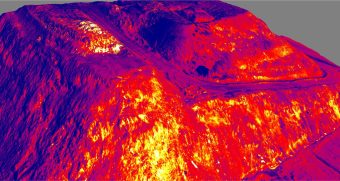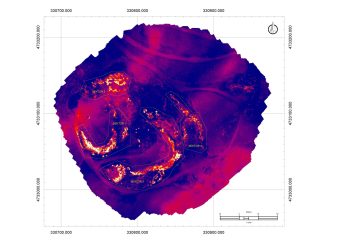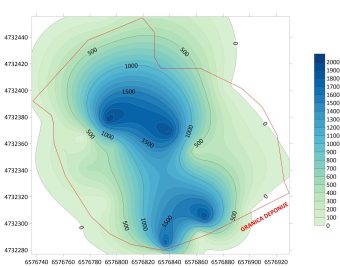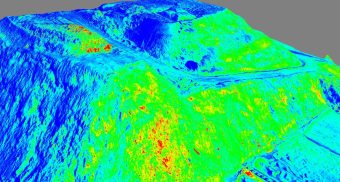
In the summer months, the entire region, and a good part of Southeastern Europe, are exposed to the constant threat of open fires. They have a devastating effect, but they are not the only threat during the summer heat. Fires at local landfills pose a huge risk to the health of people and all living things in the environment. One of the biggest fires at the local landfill happened in August 2021 in Vinča. The smoke cloud from the landfill covered Belgrade for almost three days. That summer, landfills in Valjevo, Kovin, and Niš, as well as several landfills in Montenegro and throughout the region, were burning. According to statistics, around 200 fires break out in landfills and open spaces every year in the south of Serbia.
Combustion products of municipal waste are very toxic. Depending on the composition and structure of the waste, as well as the amount of fuel and the wind direction, they can, to a certain extent, affect the health of the population that is kilometres away from the fire site, even up to a distance of 20km. Given that most of the landfills in Serbia and the region are near large towns, it is clear that the direct harmful effects of accidents at landfills on the health of the population are extremely large.
IN FOCUS:
- PERFECT TIMING AND THE RIGHT PARTNER FOR BUILDING A SOLAR POWER PLANT
- ENVIRONMENTAL PROBLEMS CAN ONLY BE SOLVED THROUGH A JOINT EFFORT
- SIEMENS — CREATING AN ENVIRONMENT THAT CARES

“It’s like having an outdoor waste incinerator that has no filters, so all toxic gases as a product of incomplete combustion of municipal waste, depending on how the wind blows, are directly released in the direction of the population and businesses. A fire can last for hours or days, even weeks”, says engineer Darko Tonić, B.Sc.,TEKON’s fire diagnostics and extinguishing consultant.
A large number of fires at landfills sometimes burn imperceptibly deep, like smouldering or underground fires. They are difficult to spot, but when they surface, they are very difficult to contain and cause great problems for fire departments.
“We have all witnessed that the fire at the landfill in Vinča has been lasting for years, maybe even decades and that the fire brigades are often powerless since extinguishing with water and foam does not give good results. Sometimes it seems that applying water to the mass of burning waste causes additional fracturing of the body of the landfill, which creates new fire zones,“ explains Mr Tonić.
The outbreak of landfill fires is one of the most serious risks that landfills are exposed to during their lifetime. Landfill fires can seriously damage the existing landfill infrastructure and can threaten the lives and health of landfill employees and the population in the immediate vicinity.
Depending on the type of landfill and the type of fire, landfill fires present unique challenges for the industry and fire services. Therefore, special attention must be paid to the types of fires at landfills, their characteristics and their causes. For a landfill fire to break out, fuel, a heat source and a sufficient concentration of oxygen should be present.
New fire diagnostics and prevention technologies

Considering the current situation of a large number of landfills in the region, the number of fires and problems faced by local authorities, as well as those who manage waste at landfills, the conclusion was that it was necessary to work on projects that would alleviate and completely eliminate these problems.
The TEKON Company implements new technologies for diagnosing the state of landfills for preliminary identification of possible problems and fire prevention, which include precise measurements such as:
– the thermal measurement from the air
– measuring the concentration of landfill and flue gases
– measuring temperature in and on the landfill’s body
Measuring the landfill’s body temperature, deep and on the surface, is a generally accepted method for identifying landfill fires.
By acquiring the latest equipment that TEKON installs on its industrial drones, as well as all the required software for processing the obtained images, thermal imaging can be carried out at a number of landfills in the region.
TEKON thus uses a non-contact temperature measurement method that measures the level of infrared radiation, because it has been established that all bodies with a temperature above absolute zero (-273.15°C) emit infrared radiation, even ice. Thermal imaging cameras are specially adapted to “see” that part of the infrared spectrum that is visible to the human eye, which is why they are also called infrared cameras.
How do those cameras work?

The infrared camera, which is mounted on the drone, contains an optical system that focuses infrared energy on a special detector chip (an array of sensors) containing thousands of detector pixels arranged in a grid. Each sensor pixel reacts to infrared energy and produces an electronic signal. The camera’s processor takes the signal from each pixel and applies a mathematical calculation to create a colour map of the objects’ apparent temperature. Each temperature value is assigned a different colour. The obtained colour matrix is sent to the memory and the camera screen as a temperature image (thermal image) of that object.
Many infrared cameras also include a visible spectrum camera that automatically captures a standard digital image. Combining these images make it is easier to connect problematic areas on the thermal image with the actual equipment or the area being monitored.
Temperatures up to 50°C indicate that the landfill is operating normally. Temperatures above 50°C are considered elevated and indicate potential hot spots and fire problems. During thermal imaging from the air, the camera records the material in the internal memory, which is later processed. During this type of recording, a large number of thermal images are generated (several thousand per recorded hectare), so appropriate licensed software is a must. The results of non-contact and direct measurements are combined to give a unique temperature picture.
Prepared by: Milica Radičević
Read the story in the new issue of the Energy portal Magazine Waste Management.



